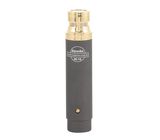Superlux Hi-10 on....
...Horns...:
* It handles trumpets ok, but a good dynamic mic like a sm/beta 57 would be a better choice.
* Used on saxophones, its actually quite warm and sound very natural.
* A trombone becomes a bit thicker with this mic, cool for big band.
...Acoustic Guitar...:
* I decided to try these mic's after hearing the acoustic guitar sample on Thomann website.
* To my taste, I got better results using ORTF technique, rather than X/Y or spaced pair.
...Drums...:
* Superlux is marketing this mic as a hihat mic, which it does just as it says on the box.
* As overheads, these can be a little too focused. A little shelving off the top-end, and gain before feedback is quite good - especially for a jazz setup!
* There is not much noticeable difference between a SM57 and Hi-10 on a snare drum in a live setting, but it gives just a little more of the stick, rim and brushes for free - as any good condenser mic would.
...Voice...:
* The Hi-10 might work on some soft female vocals, but it is far from the optimal choice. If this is the only mic you've got - well go for it, but pops are virtually unavoidable.
* As a spoken word radio mic, the Hi-10 might be cool due to the added bass response at a close distance, but as said before - it pops really easily, so the use of a multi band compressor like a Waves C6 is required to get a usable signal.
* This I haven't tested, but maybe it's a good choice as an overhead choir mic - you would probably have to suspend about 15 of these for it to work, but still.. they are really cheap (at the time of writing).
Final notes:
* The proximity effect of Hi-10 is quite fun and usable, as the mic produces a whole lot of more bottom end, than similar small diaphragm mics.
* This is also a very directional mic, so unless it's used on drums, percussion or perhaps a piano - musicians with good microphone technique is required for great results (ain't it always? :) )

